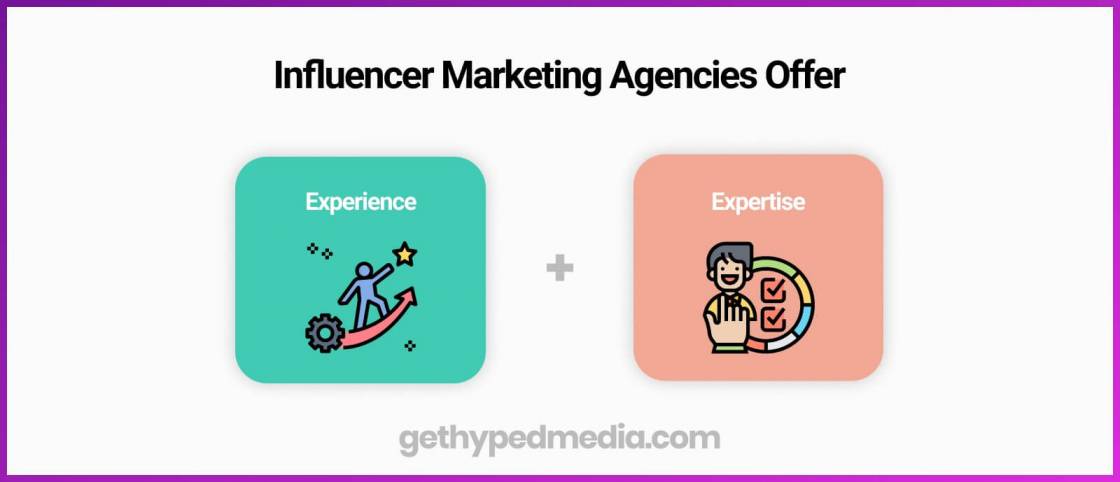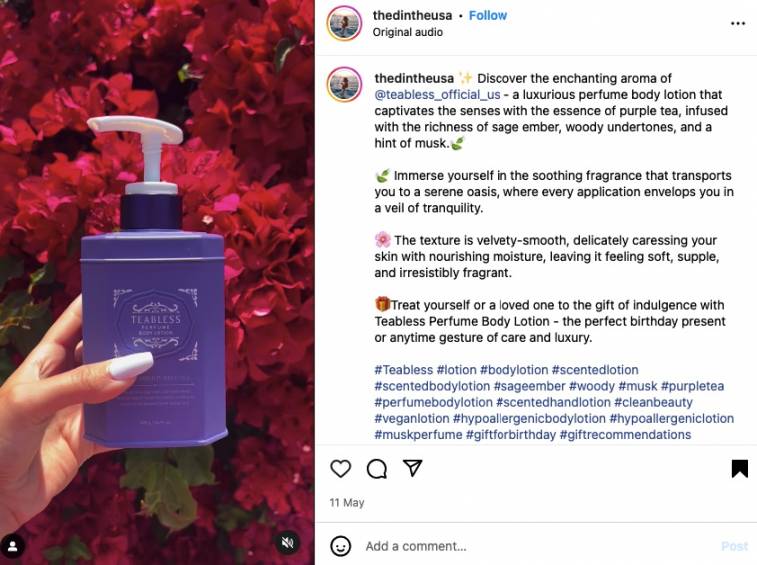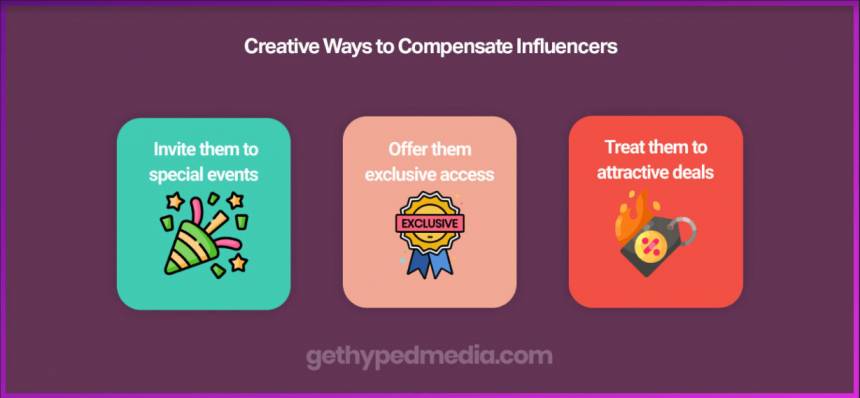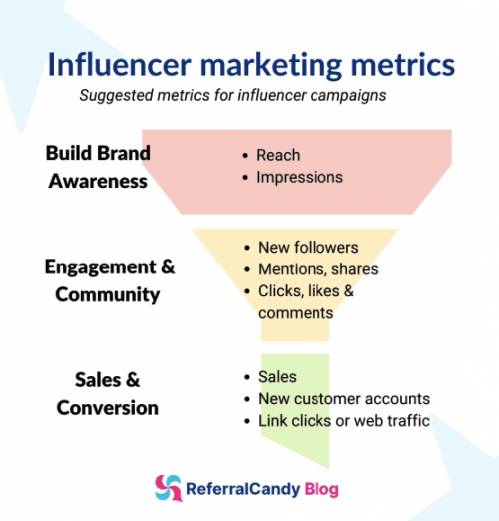Attracting the attention of social media users is no easy task. Retaining that attention for more than a few seconds is even harder. After all, you’re competing against millions of influencers who regularly create engaging, if not viral, content. If you can’t beat the influencers you might as well hire them. But remember to avoid the common influencer marketing mistakes that can ruin even a well-planned influencer campaign.
What are these mistakes and how can you avoid them?
Let’s find out.
Looking for an effective way to use influencer marketing to boost your business growth?
Try Get Hyped Today!
Table of Contents
11 Top Influencer Marketing Mistakes & How to Avoid Them
While influencer marketing is one of the best ways to grow your brand and expand your online presence, some seemingly small mistakes can make it ineffective. The influencer marketing space is competitive and you can’t afford any mistakes.
These mistakes may inevitably waste your time, effort, and resources, and even damage your brand’s reputation.
For instance, if you work with the wrong influencers, you end up sharing your content with the wrong audience. This could result in low-quality leads and poor sales conversions. A complete waste of time and effort.
What are these rookie influencer marketing mistakes you must avoid if you want to get the best results from your influencer marketing efforts in 2024?
Let’s discuss them in detail.
1. Not Setting Clear Goals
One of the biggest influencer marketing mistakes that you can make is not setting specific and well-defined goals before starting your campaign.
Starting an influencer marketing campaign without clear goals is like taking a shot in the dark without knowing the target.
Do you really want to spend time and money on a campaign without knowing what you want to achieve?
No, because without goals you’re going to put in a ton of work, spend your budget, and end up right in the same spot.
How to Fix It
Set specific, measurable, and time-bound goals for your influencer marketing campaigns. Don’t use vague statements like “I want more sales”, but instead clearly define the goals that will lead to more sales.
Here’s a simple framework you can use for setting goals.

Image via Venngage
But that’s not all!
You should also define KPIs to measure your campaign’s performance on these goals. After all, how else will you know whether your influencer marketing campaign was a success or a failure?
Pro Tip
Don’t set too many goals, especially with your first few campaigns.
A sure way to have your campaign fail is to dilute it with too many goals. You’ll end up trying to accomplish everything and end up accomplishing nothing.
2. Prioritizing Influencer Reach Over Fit
Next on our list of the biggest influencer marketing mistakes is choosing influencers based solely on their reach or number of followers.
Why is that a mistake?
Well, reaching millions of irrelevant people is not as useful as reaching a few hundred potential customers who are highly likely to buy from you.
Sure, it’s tempting to collaborate with Kylie Jenner and reach her millions of followers, but you should evaluate whether her followers are relevant to your business. If they’re not, it’s a complete waste of budget and effort.
How to Fix It
Prioritize influencer relevance over reach when selecting micro-influencers for collaborations. Here are some factors to consider when selecting an influencer:
- Their niche and areas of expertise
- Whether their audience matches your target customers
- How well the influencer aligns with your brand
- Other brands that they represent
- The type of content they create
3. Not Vetting Your Influencers
Another mistake that you can make while selecting influencers is not vetting them properly and falling into the trap of fake followers and engagement.
There are many influencers that use bots to like and comment on their posts to increase their engagement rates. Many also have bots as followers to boost their follower count and allow them to charge higher prices to unknowing brands.
One of the influencer marketing mistakes that amateur marketers make is not recognizing these fraudulent influencers and wasting money on them.
How to Fix It
Thoroughly vet influencers using influencer audience analysis tools that provide in-depth influencer analytics. Check for irregularities like:
- A sudden spike in followers up or down
- Unnaturally high spikes in engagement from one post to the next
- Many followers with strange usernames that appear randomly generated
You should also manually check influencer profiles to see what kind of comments they’re getting and identify bot comments that look suspicious or spammy.
Also, check the past brand collaborations of an influencer and see how impactful they were as far as engagement on the post.
Were the comments on their last few sponsored posts mostly emojis? That’s a red flag that their audience is full of bots.
Sound like too much work?
Hire an influencer marketing agency with the audience analysis tools needed to help you find the best influencers for your brand. They have the expertise and the technology to not only find the right influencers but also help you run successful influencer marketing campaigns.

Pro Tip:
Research the influencer you want to work with to ensure they have not worked with your competing brands as this can undermine their authenticity.
4. Providing Vague Content Briefs
You want your influencer’s messaging to be 100% authentic, but if there’s a goal you’re trying to achieve with your campaign then you want to clearly explain that to them.
For example, maybe you’re working for a supplement brand. Of course, legally you can’t have the influencer say that your Vitamin C drops cure cancer. But if you don’t specifically tell the influencers what they cannot say, you can be sure that at least one of them will say it.
As such, if you fail to provide a clear and detailed content brief, the influencer may share the wrong message or create content that is inappropriate or doesn’t align with your brand.
Also, if you don’t include the legal and compliance information the influencer needs to know, they may post content that puts you at risk of legal trouble.
How to fix it
To keep your brand out of legal trouble, include a “What Not To Do” section in your briefs.
Also, set clear expectations and provide precise and specific guidelines to influencers. What kind of content do you want them to create? What message would you want them to convey and what results are you expecting?
Provide a detailed brief of what you want, but leave some space for creative freedom.
That brings us to the next point in our list of common influencer marketing mistakes—micromanaging the influencers.
Pro Tip
The Federal Trade Commission (FTC) mandates that influencers disclose brand promotions or endorsements when they post paid advertisements. Avoid legal trouble by reminding your influencers to include this information in their content.
5. Not Giving Creative Freedom
Have you ever had a manager who breathed down your neck and kept micromanaging you? It’s annoying, right?
Don’t be that kind of a boss to your creator partners!
Being too controlling or overly specific in your briefs is the other end of the spectrum, and one of the biggest influencer marketing mistakes.
It not only annoys the influencers, but it also takes away their creative freedom, and you end up with an over promotional message that won’t deliver results.
Given that influencers are creative people, it’s a waste if you don’t even give them a chance to show what they can do for you.
I guarantee that they can create much better content than what you had in mind because they know their social media audience better than you ever could.
How to Fix It
While you should give influencers a brief guiding them on what messaging you want to convey, leave the creative aspects to influencers. Nudge them in the right direction by sharing your campaign goals and then see what ideas they come up with on their own. You can always ask to review drafts of their work and request changes if you really don’t like something.
For example, in the campaign below, influencer “The D,” advertises Teabless body lotion, while adding a creative twist to it.
She’s known for using flowery backdrops in her product shoots. For this campaign, she maintains her signature backdrop and opts for a bright red floral arrangement that contrasts with the purple bottle of the lotion.
By doing this, she draws attention to the product being advertised, while maintaining her authenticity and creativity.
 Image via Instagram
Image via Instagram
6. Wasting Money on One-Time Collaborations
Let’s make something absolutely clear—influencer marketing is a long-term play.
Ending communication with your influencers after one or two posts in a campaign is one of the biggest influencer marketing mistakes you can make.
Why?
You’re quitting right before the good part.
First, you just put in all that budget and work to create some momentum on social media behind your brand. Now keep it going!
The results from influencer marketing build exponentially over time.
Unfortunately, so many brands never see those exponential campaign results because they don’t trust the process and they stop after 3 to 6 months.
Second, nurturing influencer relationships is useful in so many other ways beyond one formal collaboration. Influencers that genuinely like your brand will mention your products or services organically, without being paid for it.
So, by not nurturing your influencer relationships you’re missing out on an opportunity to build loyal brand ambassadors and advocates who will be tremendously useful to your brand in the long term.
How to Fix It
Treat influencers like who they are… your customers.
Simply stay in touch with influencers by liking, commenting on, and sharing their posts. You can compliment them for their good work, send them additional free products, and invite them to your brand events.
The point is to get creative in making them feel like they’re a valuable part of your team. If you can accomplish that, then your influencers will repay the favor and more.
7. Choosing the Wrong Compensation
Influencers should be fairly compensated for their efforts.
That doesn’t only mean monetary compensation, but monetary compensation is definitely the primary driver for influencers in the industry.
You can offer other forms of compensation that are just as lucrative for influencers such as free products and affiliate deals but don’t expect experienced influencers with a large reach to accept those offers.
The best influencers are in high demand. They receive brand deals offering upfront monetary compensation every day so they ignore most product-only and affiliate offers.
How to Fix It
Offer influencers a fair market rate.
If your offer is too low, you won’t get any replies from influencers.
If your offer is too high, you’ll burn through your budget and hurt your influencer marketing ROI.
So how do you know the market rate?
Look up recent blog posts in your niche to find influencer rate sheets to use as a reference.
Analyze the feedback you’re getting from influencers on your offers. If you’re offering $1,000 and ten influencers in your niche are coming back asking for $5,000, then chances are your offer is under the market rate.
One of the best ways to ensure you’re hitting the market rate with your influencer partnerships is to talk with an influencer marketing agency. Agencies are running multiple campaigns in multiple niches at any given time. They always have their finger on the pulse of the market.
Here are some other creative ways to compensate influencers that you can try with smaller influencers, but won’t work with popular ones.

8. Allocating the Wrong Budget
Launching a successful campaign requires careful financial planning and budget allocation. Your budget should be enough to cover influencer payments, ad placement fees, and agency fees (where applicable).
Keep in mind that production costs and promotional fees can quickly add up. That’s why it’s important to make accurate estimates and keep a little extra for contingencies.
On the other hand, using an unnecessarily large budget will lead to resource wastage, so try not to go overboard.
How to Fix It
Assess your campaign goals and campaign scope to decide the budget.
Conduct thorough market research to understand the range of influencer fees in your niche.
If you start negotiating with an influencer and realize they cost more than what you have budgeted, you can consider other options.
Consider partnering with a micro-influencer who will charge less while delivering great results, instead of working with big names that cost a lot more. As long as they have the right audience and engagement rate, you can get the desired results.
Depending on your goals, you may also need to expand your budget to expand your reach.
So, for instance, if your campaign goal is to spread brand awareness, spending more money on mega influencers will be worth it. Think of it as an investment with great ROI.
9. Using the Wrong Payment Model
One of the biggest influencer marketing mistakes you may be making is using the wrong payment model.
Why?
Because using the right payment model makes it easier to compensate the influencer adequately.
If you don’t use a payment model that directly ties the influencer’s performance to the incentive, it can lead to budget mismanagement.
As a result of this, you may end up overcompensating the influencer for low-performing content or undercompensating them for high-performing content.
How to Fix It
Be open to using different compensation models to pay influencers.
Rather than sticking to flat fee payments, consider cost per click, cost per engagement, pay per post, or commission-based models. This will make the influencers more accountable.
For example, if you’re running an influencer marketing campaign to increase your sales leads and conversions, using a pay-per-post compensation model will be inefficient.
Instead, you can use performance-based payment where the influencer gets paid for each lead or customer they acquire for your brand. This will be mutually beneficial for both parties.
If you’re working with nano influencers or micro-influencers, you can also offer free products or merchandise as compensation for their work. This is a cost-effective solution if you have a tight budget.
Here’s an example of how a nano influencer created a post reviewing Olay’s body moisturizer in exchange for a free bottle.
 Image via Instagram
Image via Instagram
10. Choosing the Wrong Platform
One of the biggest influencer marketing mistakes you can make is choosing the wrong platform. Each social media platform has its own unique audience that responds to a certain style of content delivery.
You should choose platforms where your target audience is most active.
Failure to do so can lead to a disconnect between the influencer’s content and the audience you are targeting. This will result in low engagement rates and low ROI.
How to Fix It
Research your audience demographics to find which platform will be best for your marketing campaigns.
To make your campaigns more effective, choose platforms frequented by your target audience.
For instance, if you want influencers to create detailed product explainer videos to promote your brand, YouTube influencers are a better choice than TikTok influencers.
YouTube audiences are more used to watching longer videos, while TikTok is better for short-form, fast-paced content.
Additionally, there’s no rule against using multiple platforms for your influencer campaigns, so don’t limit yourself to one. Explore multiple platforms and find what works best for you.
11. Ignoring Analytics & Using the Wrong Metrics
 Image via ReferralCandy
Image via ReferralCandy
One of the most important aspects of influencer marketing is analyzing the results.
Some marketers often assume that because they’ve done all the right things, the results will be great. However, this is not always the case.
You must track and analyze performance metrics to evaluate campaign effectiveness. If you don’t track these, you’ll not understand what did or didn’t work, which is needed to optimize your strategy for future campaigns.
Another mistake you can make is failing to use the right metrics to track your campaigns.
Specific metrics are aligned to specific campaign goals. As such, if you use the wrong metrics, you will not be able to accurately measure the success of your campaigns.
For instance, if you want to track the level of engagement on your campaigns, you must use engagement metrics, such as likes and comments. You cannot use the number of impressions to track the level of engagement because it does not provide the right insights.
How to Fix It
You need to decide on what key metrics you will use to track the results of the campaigns.
Once you have outlined the metrics that are important to you, communicate them to the influencers to let them know what’s expected of them. That way, both parties will be on the same page.
The metrics you choose will usually depend on your marketing objectives.
For example, if your objectives are to increase brand awareness, you’ll be analyzing metrics like reach and impressions. If your goal is to boost audience engagement, you’ll need to track engagement metrics such as likes, shares, and comments.
However, if your goal is to boost conversions then the most important metric for you is conversion rate. You can provide influencers with UTM links, promo codes, or affiliate links to make it easier to track conversions.
You can either create a spreadsheet to keep track of these metrics or use influencer marketing tools that automatically track them.
At the end of the campaign, calculate your overall influencer marketing ROI. This will help you determine if the campaign was a success or not.
Here’s a simple formula you can use to calculate this:
ROI = [(Revenue Generated – Cost of Campaign) / Cost of Campaign] x 100
FAQs
1. What is wrong with influencer marketing?
There is nothing wrong with influencer marketing if you avoid the common mistakes mentioned in this post! For example, if you collaborate with the wrong influencer who’s not a good fit for your brand, then your campaign will fail even if you do everything else right.
2. Which mistakes should one avoid in influencer marketing?
Here are some common influencer marketing mistakes that you want to avoid:
- Not setting clear goals
- Prioritizing reach over relevance when selecting influencers
- Not vetting influencers properly
- Giving vague or no content briefs to influencers
- Not giving more creative control to influencers
- Not fostering a long-term relationship with influencers after the first collab
- Choosing the wrong compensation model
3. What should an influencer not do in a sponsored post?
In a sponsored post, an influencer should not:
- Hide the fact that a post is sponsored or an ad
- Create irrelevant or misleading content
- Promote every brand that approaches them
- Buy fake followers or engagement
- Violate FTC guidelines & regulations
- Use popular music without the required royalties
- Use someone else’s content or likeness without written permission
4. Does influencer marketing actually work?
YES! If done right, influencer marketing can help you achieve tons of your marketing goals at a fraction of the cost of other marketing tactics. As long as you avoid the common influencer marketing mistakes in this post, you can get the desired results from your campaign.
5. What are the dos and don’ts of influencer marketing?
Here are some common dos and don’ts of influencer marketing:
- DO set goals right from the start
- DON’T fail to set the right KPIs and measure your campaign’s ROI
- DO find influencers based on how relevant they are to your brand
- DON’T choose influencers based on just follower count
- DO hire an influencer agency to find and vet influencers
- DON’T fall into the traps of fake and fraudulent influencers
Ready to Plan Your Next Influencer Campaign?
That was our list of the top influencer marketing mistakes that we see so many brands continue to make.
You may have known about a few of these mistakes already and some might be new to you. Hopefully, now you’re more knowledgeable about how to run a successful influencer marketing campaign the right way the first time.
Still unsure about your approach?
If you need help, contact us and we’ll plan and execute your influencer marketing campaign from start to finish to ensure that it hits your goals.



